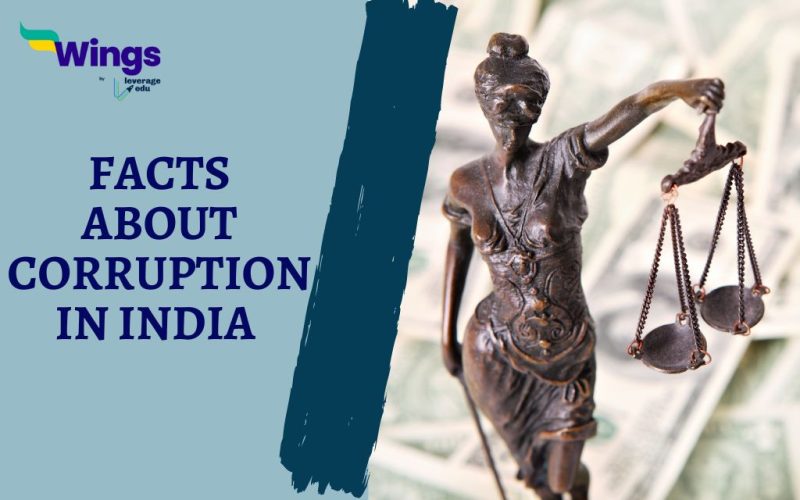India is famously known for corruption. Many moves time and again have proved this fact, like Special 26, Satyagrah, Gabbar, etc. Despite India’s anti-corruption efforts like stricter laws and public awareness campaigns, its ranking on the Corruption Perception Index has shown a mixed picture. This suggests ongoing challenges in tackling perceived public sector corruption. In this article, we will uncover some major facts about corruption in India.
Table of Contents [show]
Facts About Corruption in India
We have compiled the top 10 facts about corruption in India that every citizen should know about.
Also Read- What is the Full Form of ACB?
- Transparency International’s 2023 Corruption Perceptions Index scored 180 countries on a scale from 0 (highly corrupt) to 100 (very clean). India scored 39, indicating a perception of moderate corruption in the public sector.
- Bribery is the most common form of corruption in India. You might have faced it, or someone you know must have been a victim of bribery over a vehicle challan. Other forms include nepotism, tax evasion, and illegal mining/resource allocation.
- Several factors contribute to corruption in India, including low salaries for government workers, excessive regulations, lack of transparency, and weak whistleblower protection.
- Corruption is a major hurdle to India’s economic development. It discourages investment, diverts resources away from essential services, and increases inequality.
- Corruption varies across Indian states. Maharashtra topped the charts for corruption cases in India in 2022 with 749 cases, followed by Rajasthan at 511. We all know Kerala is the least corrupt state, one possible reason is the high literacy rate.
- A 2005 Transparency International study found that more than 62% of Indians paid bribes to public officials at some point in their lives to get things done. Later, in 2008, another report revealed that around 50% of Indians directly bribed or used contacts to secure services from government agencies.
- The Indian government has taken steps to address corruption, including passing stricter laws, launching awareness campaigns, and establishing anti-corruption agencies.
- Despite these efforts, corruption remains a significant problem in India. Enforcing anti-corruption laws can be difficult, and there is a need to improve transparency and accountability in the public sector.
- Corruption is a major concern for many Indians. It erodes trust in government and undermines the rule of law.
- Continued efforts are needed to tackle corruption in India. This includes strengthening institutions, improving transparency, and empowering citizens to hold officials accountable.
Also Read- What is the Full Form of CBI?
FAQ
There isn’t a single main cause, but lack of transparency and accountability are major factors in corruption in India.
India ranked 93rd out of 180 countries in the 2023 Corruption Perception Index.
Maharashtra topped the charts for corruption cases in India in 2022 with 773 reports, followed by Rajasthan at 511.
Related Blogs
These are all the facts about corruption in India. If you want to know more about topics like this, then visit our general knowledge page! Alternatively, you can also read our blog on general knowledge for competitive exams!
 One app for all your study abroad needs
One app for all your study abroad needs















 45,000+ students trusted us with their dreams. Take the first step today!
45,000+ students trusted us with their dreams. Take the first step today!
